VISITATION GUESTIMATION
In March, SAM convened a Huddle, “Reflections and Projections,” to discuss how the industry did in 2022 and what’s in store for 2023. The Huddle examined everything from new pass products to average daily room rates and visitation. Was the season as busy as the photos of lift lines and traffic jams suggested? We wanted to know, so we polled our Huddle participants: “Resort operators, will your skier visits be up, down, or flat compared to last season?”
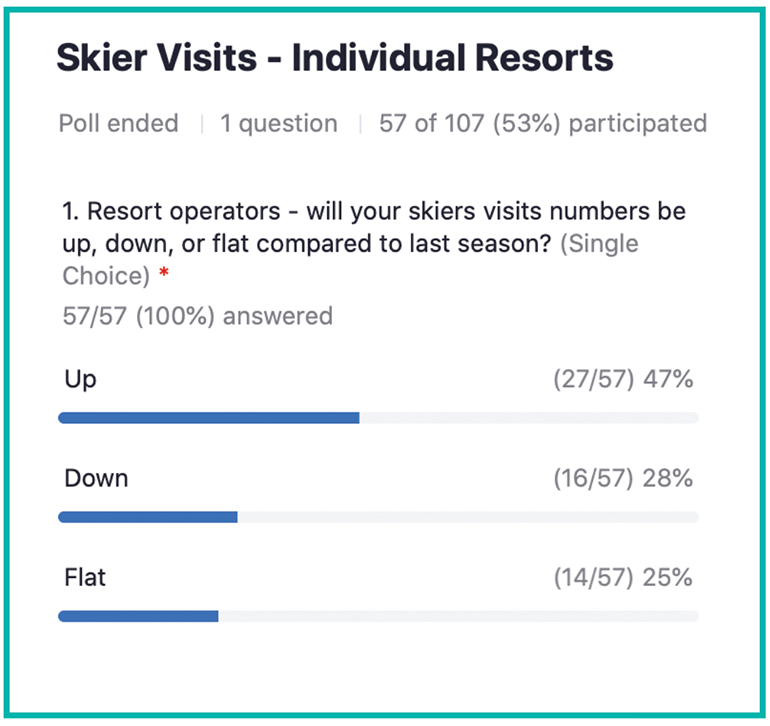
As you can see above, the answer was not necessarily what you might expect. We know some ski areas had a banner season, but more than half of our participating operators expected visits to be flat or down year-over-year. So, if our utterly unscientific poll is close to the reality—2021-22 will not be record breaking.
Our second poll (see next column), which shows total visitation guestimates from 72 Huddle participants, reflects that. There were 59 million skier visits in 2020-21, on par with the strong 2018-19 season. Responding participants ballparked 2021-22 in the same bracket, with 57 percent estimating between 57.1 to 61 million skier visits this year.
One thing we didn’t poll the Huddled on: revenue. This may be an exciting metric to see when the NSAA Kottke Survey data hits later this year. By most accounts, yields are up—in some cases, way up. Even if visitation is flat or down, EBITDA will likely be strong. With labor down (not necessarily intentionally but as a result of staffing shortages) and yields up, businesses are likely to have a highly profitable year. So, this could be a record-breaking season, just perhaps not by the metric we usually celebrate.
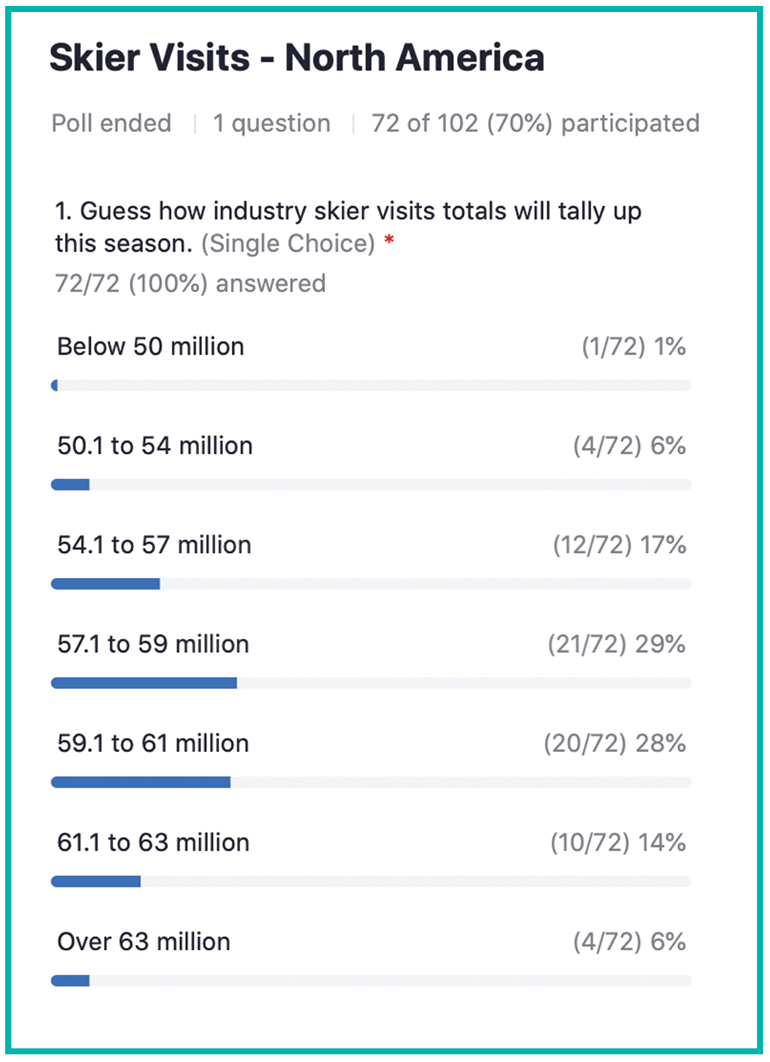
Of course, when we talk EBITDA, we also have to talk business sustainability, which was another topic of conversation on the Huddle. Reduced labor costs and high yields aren’t necessarily tenable in the long-term. The consumer has service expectations that must be met and a threshold for spending that may not support a continued steep increase in cost. Add to that rising inflation, exacerbated by war in Ukraine and the still sluggish supply chain (see “The Supply Dilemma” on p. 92), and we may see consumers tighten their purse strings—particularly as the Fed continues to try and squelch inflation by slowing the economy.
THE VOICE OF THE GUEST, 2021-22
We are what our guests say we are, not what we think we are or what we want to be. The collective experiences of our guests determine what we are, and drive the two largest sources of revenues and profits—repeat visits and referral business.
What are our guests saying in resort surveys about their 2021-22 ski season experiences? And how have these experiences affected their satisfaction and their loyalty to the resort visited?
To answer these two questions, Guest Research compared our research partners’ survey ratings for the 2021-22 season (through March 31) with the same resorts’ Net Promoter Score (NPS) ratings for the two previous seasons. Here’s what we learned: continued »
• Loyalty has suffered during the pandemic, trending lower in both years. The average likelihood to recommend (LTR) NPS of 65 for this season is three points lower than during 2020-21, and five points lower than 2019-20.
• Visit satisfaction has fared better. While the average overall visit experience/satisfaction score declined by three points to 59, that followed a three-point increase in 2020-21. Most aspects of the experience—ticketing, dining, snowsports school—followed that pattern.
• The largest visit satisfaction improvements compared to 2019-20 were for ease of online purchasing/booking, ticketing, and F&B. All three reflect the Covid-inspired adjustments made to minimize in-person contacts. Remarkably, the average overall F&B score was twice as high as during pre-Covid 2019-20.
• Individual resort LTR scores ranged from the mid-40s to the mid-80s; 70 percent of the resorts’ NPS scores declined compared to the 2020-21 season.
• Rating declines tended to be greater in the East than in the West.
• Visit satisfaction was likely impacted by staff shortages, lean snowfall in parts of the country, and the relaxation of many of the Covid protocols that had strengthened ratings during 2020-21.
The big question in all this is, why is loyalty trending down, if satisfaction remains consistent? It’s an important question, because loyalty, not satisfaction, is proven to drive business results. While visit satisfaction is highly correlated with loyalty, there are other factors that affect loyalty, such as the emotional connectivity a resort achieves with its guests. Staff shortages at many resorts likely reduced that connection. It is critical for resorts that have seen a loss of loyalty to rebuild those emotional ties.
In the July issue of SAM, we will analyze the final season ratings and rating trends to see what attributes drove this season’s ratings, and what factors influenced the LTR and overall experience/satisfaction ratings. Do ratings differ between first-time and repeat guests? Are there generational differences in the ratings? Did declines stem from a loss of promoters or a rise in detractors? Stay tuned.
—Scott Hannah, President, Guest Research
THE PREMISE AND PROMISE OF INDY’S NEW XC PASS
Indy Pass introduced the new Indy XC Pass this April in partnership with the Cross Country Ski Areas Association (CCSAA), which will receive 10 percent of pass sales earnings. For the 2022-23 season, the pass will provide two days of trail access to seven cross country ski areas for $69 (adult). Cross country access will also be included on the regular alpine Indy Pass ($279 for two days at 82 alpine areas).
The founding partner ski areas are: High Point XC Center, N.J., WhiteGrass Touring Center, W.Va., Maplelag Resort, Minn., Woodstock Nordic Center, Vt., the Adventure Center at Waterville Valley and Jackson XC, N.H., and Sovereign Lake, B.C.
So, what does this mean for the cross country ski world?
A cross-country ski “gold pass” concept has previously been attempted, but with minimal ski area participation and consumer sales. The fact that cross country skiing is offered at a much lower price point compared to alpine skiing (where millions of participants utilize multi-mountain passes) provides small financial incentive for cross country skiers to invest in a multi-area access pass.
The typical outlay for access to groomed cross country trails is roughly $25 for a day pass. At $69, the Indy XC Pass starts to make mathematic sense for those who live in the Northeast and might be able to utilize, say, eight days (so, $8 per visit) across four partner cross country areas.
Of course, getting down to a cost as low as $8 per visit—even in the Northeast—requires spending money to travel to ski areas that range from northern New Jersey to the White Mountains of New Hampshire.
However, Indy anticipates there will be more than 30 cross country areas on the pass by next winter. This could significantly increase savings for consumers and help the pass to succeed as a regional promotional product, which is perhaps its greatest potential.
The CCSAA–Indy partnership has the ability to increase public awareness of cross country skiing among both casual winter sports enthusiasts who use the regular Indy Pass as their only ticket product and core downhill skiers and riders who purchase Indy as an add-on. These users have the potential to become crossover cross country participants, inspired to check out one of the Indy cross country ski area partners on their downhill pass.
Among existing cross country skiers, the Indy XC Pass may also help raise awareness of the benefits of sliding at a commercial cross country ski area that provides marked and regularly groomed trails. This is significant because, to many people, cross country skiing means going to parks and breaking trails or skiing in a previous skiers’ tracks in ungroomed snow conditions. It’s free, of course, but old or crusty snow makes it more difficult to have a fun and safe outing.
As more of the 4-5 million current cross country skiers discover the joys of groomed ski trails, visitation to commercial ski areas should swell—which will help the entire cross country ski industry, from area operators to retailers and product suppliers.
For operators, an Indy partnership seems likely to expand the number of new users who visit their ski area. It’s unlikely that there will be thousands of Indy visits in the inaugrual year, but the success of Indy’s alpine product is promising for the cross country ski market. Plus, the pass is an added revenue stream: participating ski areas get a percentage from Indy for every visit—an arrangement Indy’s alpine partners have been happy with.
The Indy XC Pass may also serve as a catalyst for growing participation by tempting newbies to make the small investment and give cross country skiing a try. Additionally, there is a tremendous opportunity for conversion for participating ski areas, each of which can encourage new visitors that enjoy the experience of skiing on groomed terrain in a welcoming environment—be they seasoned cross country skiers or new recreators—to upgrade to a season pass for unlimited access.
You can see where I’m going with this analysis—if the Indy XC Pass sees a high level of user engagement, it may very well precipitate a new dawn for cross country skiing, with a larger number of cross country participants, more revenue for cross country ski businesses, and a higher conversion rate from casual user to regular customer. For the industry’s sake, let’s hope so.
—Roger Lohr, Founder and Editor, xcskiresorts.com
SUPPLIER NEWS
NORDICA has formed a new sports marketing team with a focus on the North American race, freeski, and pro communities. Joe Cavallaro will manage the newly formed team, which will be based in the United States and Canada.
AZDS updated its widely-used RevRaise hopitality booking engine, building it on Inntopia’s API so guests can now book multiple products on a single interface.
Rico Wehrli is retiring from the ropeway industry after nearly 33 years with Swiss company CWA CONSTRUCTIONS, an arm of the Doppelmayr Group.
The High Technology Industries Group (HTI) acquired a majority stake in Swiss ropeway company Bartholet Maschinenbau AG. Bartholet joins Leitner Poma, Skytrac, Sigma, Prinoth, and Demaclenko under the HTI umbrella.
PEOPLE
In the East, vice president of operations Brian Norton was promoted to president and general manager of Loon Mountain, N.H., succeeding Jay Scambio, who was promoted in October to COO – day areas for Loon parent company Boyne Resorts.
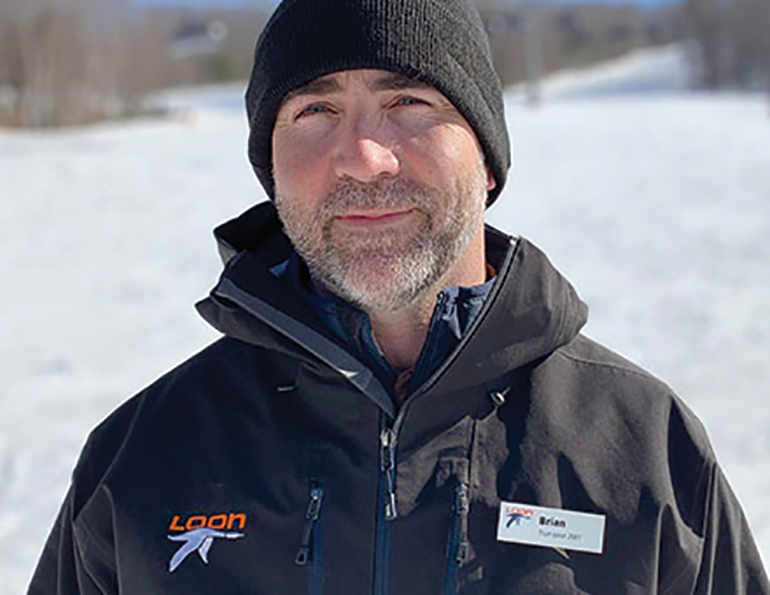 Brian Norton
Brian Norton
Brian Suhadolc, formerly VP of mountain operations at Vail Mountain, Colo., was named general manager of Mount Snow, Vt. … Megan Canty, previously payroll and benefits manager, was promoted to director of human resources at Killington Resort, Vt. … Kayla Milligan was hired as the private events manager at Lost Valley, Maine.
Holiday Valley, N.Y., hired Dash Hegeman as director of marketing; he will succeed Jane Eshbaugh upon her retirement after 41 years with the resort. … Ted McDowell transitioned this April from director of food and beverage at Heavenly Mountain Resort, Calif., to general manager of Roundtop, Pa.
In the West, Aspen Skiing Company president and CEO Mike Kaplan will retire April 30, 2023, after 30 years with the company. … At Deer Valley, Utah, Susie English is succeeding Coleen Reardon as vice president of marketing, following Reardon’s retirement.
Doug Pierini, senior vice president and chief operating officer West Region, and Tim Baker, senior vice president and chief operating officer East Region, were both appointed to the Vail Resorts executive committee.
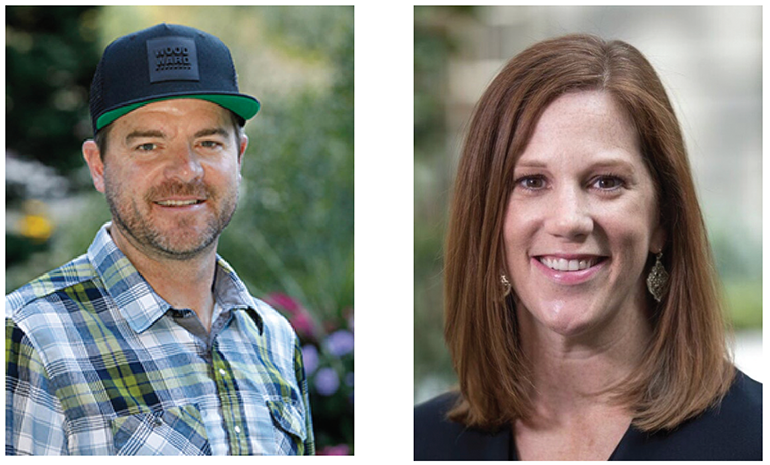 Left: Chris "Gunny" Gunnarson. Right: Stacey Hutchison.
Left: Chris "Gunny" Gunnarson. Right: Stacey Hutchison.
Powdr named Chris “Gunny” Gunnarson president of Woodward, its collection of youth action sports camps and mountain resort experiences; Powdr also hired Stacey Hutchinson to be its vice president of communications and government affairs
U.S. Ski & Snowboard appointed Anouk Patty to be its new chief of sport. The role is part of an organizational restructure aimed at enhancing athletic performance at all levels across each of the organization’s sports.
AWARDS
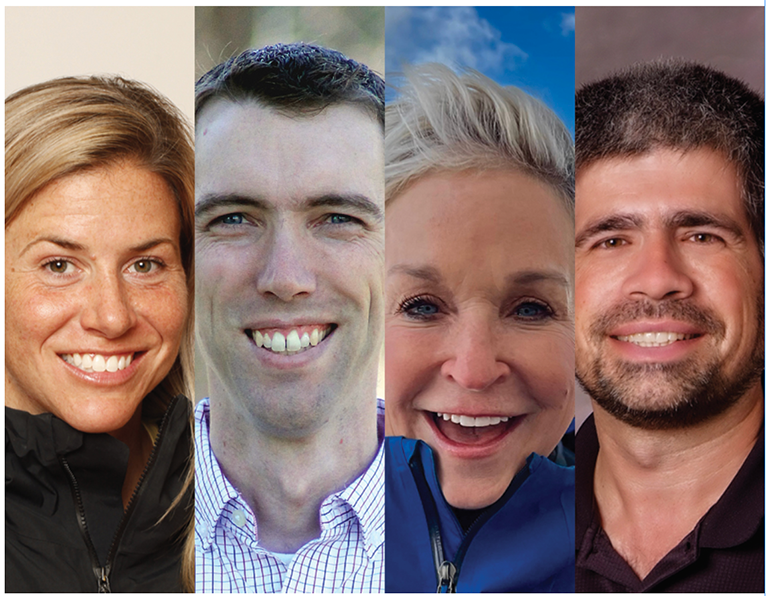
Four individuals have been recognized with 2022 SAMMY Leadership Awards: Constance Beverley, CEO of the Share Winter Foundation; Gregg Blanchard, founder of Slopefillers and vice president of marketing for Inntopia; Katie Boedecker, owner and general manager of Showdown Montana; and Kevin Somes, general manager of Snow Valley, Calif.
Quebec ski industry pioneer and Les Sommets co-founder Louis Dufour died Feb. 19, 2022. Dufour led Les Sommets, the largest private ski resort ownership group in Quebec, for 50 years prior to his death. Recognized for innovations that would later become industry standards, Dufour is considered the father of night skiing in Quebec. Dufour played a key role in the creation of the Quebec Ski Areas Association (ASSQ), and he served as its president from 1986 to 1988. He was the recipient of numerous awards, including Ski Canada’s Canadian Skiers of Distinction, and the ASSQ Réal Boulanger Award. He was also inducted into the Laurentian Ski Hall of Fame in 1994.
Snowcat innovator and grooming pioneer Russ Harmer, 74, died March 22, 2022, in Salt Lake City, Utah. In 1966, Harmer began his long ops career with Alta Ski Area. Within two years, he was named the head of a brand new snow grooming department, ultimately climbing to the role of assistant general manager of the resort. During his time at Alta, Harmer worked closely with Thiokol’s Mike Beeley to design and test a new generation of snow grooming machines. He was instrumental in helping develop hydrostatic drives, which allowed for operations on steeper terrain, and a 12-way articulating blade that rolled the snow as it pushed, mixing old snow with new for a better surface.
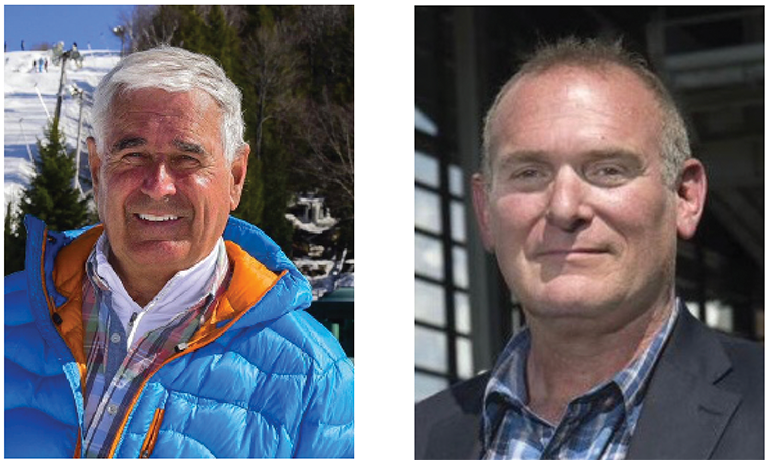 Left: Louis Dufour. Right: Adam Sutner.
Left: Louis Dufour. Right: Adam Sutner.
Leading industry marketer Adam Sutner died of a heart attack April 4, 2022, at Crystal Mountain, Wash., where he was vice president of business development, skier services, sales and marketing. He was 61. Sutner made his mark in outdoor sports marketing after several decades in advertising in the U.S., Europe, Asia, and Australia. He served as the sales and marketing director at Vail Mountain, Colo., and as the chief marketing officer at Jackson Hole Mountain Resort, Wyo. In 2019, he moved to Crystal Mountain, Wash. There, Sutner worked closely with the Muckleshoot Indian Tribe to plan and administer an educational program for Muckleshoot students and establish a dedicated yurt at the base of the ski area that serves as the tribe’s schoolhouse and campus at the mountain. He also was a key architect of Crystal’s nationally recognized bus transportation program designed to reduce traffic and congestion in the region.






